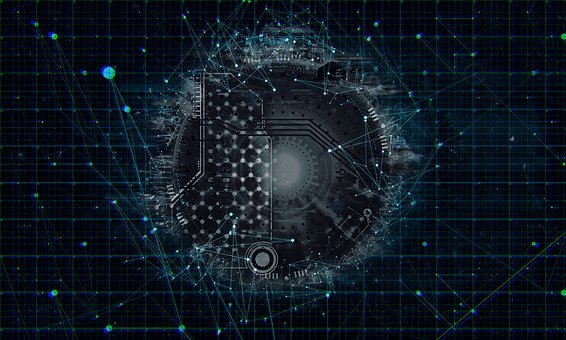
Basic Facts:
Electronics and the science of electricity both deal with electric current. But each focuses on a different use of current. Electricity deals with current mainly as a form of energy that can operate lights, motors, and other equipment. Electronics treats electric current chiefly as a means of carrying information. Currents that carry information are called signals.
A steady, unchanging electric current can carry energy. But the current must vary in some way to serve as a signal. Some electron devices change a current’s behaviour to produce or modify signals. Others interpret the signals. The signals may represent sounds, pictures, numbers, letters, or computer instructions. Signals also can be used to count objects, measure time or temperature, or detect chemicals or radioactive materials.
The signals in electronic circuits may be classified as either digital or analog. A digital signal is like an ordinary electric switch-it is either on or off. An analog signal can have any value within a certain range.
Analog signals are widely used to represent sounds and pictures because light levels and the frequencies of sound waves can have any value within a given range. Analog signals can be converted into digital signals, and digital signals into analog. For example, compact disc players convert digital sound signals on discs to analog signals for playback through loudspeakers.
The fast and reliable control of both digital and analog signals by electronic equipment is made possible by the unique properties of such semi-conductor materials as silicon and germanium.
Electronics depends on certain highly specialised electron devices. A television set, computer, or other piece of complex electronic equipment may contain anywhere from hundreds to millions of these devices. The best-known and most important electronic device is the transistor.
Transistors still operate millions of stereos, radios, and television sets. But engineers can now put more than a hundred thousand transistors on a single chip of silicon that is smaller than a fingernail. Such a chip forms an integrated circuit. Chips of this type can be wired together on circuit boards to produce electronic equipment that is smaller and less expensive—but far more powerful—than ever before.
Electronic devices are commonly used in a large number of applications that formerly relied on mechanical or electric systems for their operation. Examples are electronic controls in automatic cameras, electronic ignition systems in cars, and electronic control in domestic equipment, such as washing machines.
Functions of Electronic Devices:
Electronic devices perform three main functions: (1) amplification, (2) switching, and (3) oscillation, all as part of circuits. A circuit consists of a series of connected electron devices and other parts. By combining the three functions in various ways, engineers design electronic equipment that performs many other special functions, such as the high-speed operations of computers.
Changing Light into Electricity:
When certain materials, such as copper oxide or selenium, are exposed to light, they produce an electric current or allow a current to flow through them. Electronic devices made from these materials can thus change light into electricity. Such devices are called photoelectric devices or electric eyes. The current from a photoelectric device is usually extremely weak. Amplifiers must strengthen the current before it can be put to use.
Producing and Using X-Rays:
Special types of electron tubes are used to produce X-rays. X-rays can pass through human tissue and other substances and leave an image on a photographic plate or on a fluorescent screen. X-rays can thus show what substances look like inside. X-rays are used in diagnosis and therapy.
Diagnosis include detection of fractures, foreign object in the body, dental cavities, and diseased conditions such as cancer. X-rays are used in therapeutic treatment also such as to stop the spread of malignant tumours. In industries, x-rays are used to find the thickness of the materials. X-rays are also used to scan electron microscopy to obtain a ”picture”.
Development of Electronics:
Electronics developed chiefly from certain electrical experiments in the 1800s. These experiments involved using a gas-discharge tube, that is, a rube from which some of the air had been removed, leaving a thin mixture of gases. The tube had a metal electrode (electrical pole or terminal) at each end.
When a battery was connected to the two electrodes, the tube glowed with bright colours Scientists believed that the negative electrode, the cathode, gave off invisible rays that caused the colours. They named the invisible rays cathode rays. As scientists removed still more air from the tuber, for their experiments, the tubes became vacuum tubes.
In 1895, the German physicist Wilhelm Roentgen discovered that the cathode rays could produce an entirely different and unfamiliar kind of ray. The cathode rays created these unusual rays when they struck the glass at the end of the tube opposite the cathode. To his surprise, Roentgen also found that ray3 produced in this way could pass through animal and plant tissue and leave an impression on a photographic plate. He named the mysterious rays X-rays.
In 1897, the British physicist Juseph J. Thomson’s discovery of electrons led to the invention of devices that could control an electron flow, or electric signal, and put it t to work.
Vacuum Tubes (Valves):
In 1904, a British scientist named John Ambrose Fleming built the first vacuum tube that could be used commercially. It was a two-electrode, or diode tube that could detect radio signals. In time, diode tubes also became widely used to rectify alternating current.
In 1907, the American inventor Lee De Forest patented a three- electrode, or triode tube. The triode tube became the first electronic amplifier. One of the first applications was in long-distance telephone lines. In 1912 and 1913, De Forest and the American radio pioneer Edwin H. Armstrong, working independently, developed the triode tube as an oscillator. The invention of an electronic amplifier and oscillator led to the beginning of radio broadcasting in the United States in 1920. This date also marks the beginning of the electronics industry.
From the 1920s to the 1950s, knowledge about vacuum tubes made possible such inventions as television, films with sound, radar, and electronic computers. These inventions, in turn, led to the development of new electronic devices.
An American scientist named G.R. Carey had built a photoelectric device, called a photoelectric cell, as early as 1875. But engineers made little use of it until the early 1920s, when they intensified their efforts to develop television and films with sound.
In 1923, a Russian-born American scientist named Vladimir K. Zworykin combined a photoelectric cell with an electron gun and so made the first successful TV camera tube.
In 1921, Albert W. Hull, an American engineer, invented a vacuum tube oscillator called a magnetron. The magnetron was the first device that could efficiently produce microwaves. Radar, which was developed gradually during the 1920s and 1930s, provided the first widespread use of microwaves.
The vacuum tube era reached its peak with the completion of the first general-purpose electronic computer in 1946.
The Solid-State Era:
Primitive semiconductor devices made of selenium had served as rectifiers as early as 1900. The crystal detectors in early radios were also semiconductors. But none of these devices worked as well as vacuum tube rectifiers and detectors.
Then, in the early 1940s, a team of American physicists produced the first successful semiconductor diodes. The team consisted of John Bardeen, Walter H. Brattain, and William Shockley. In 1947, this same team invented the transistor. Manufacturers began using transistors as amplifiers in hearing aids and pocket-sized radios in the early 1950s. By the 1960s, semiconductor diodes and transistors had replaced vacuum tubes in much electronic equipment.
Microelectronics:
In the late 1950s, military and space programmes began demanding more compact electronic equipment. Although manufacturers had reduced the size of electron devices, each device still formed a separate component in a circuit As a result; electronic equipment was too large for the demands of the military and space programmes. Electronic companies began work on developing far smaller circuits. Their work led to microelectronics-the design and production of integrated circuits and of equipment that used integrated circuits.
By 1960, engineers and scientists had succeeded in building an integrated circuit. It had all the functions of a conventional circuit packed into a semiconductor crystal, 1,000 times smaller than a conventional circuit.
Role of Electronics:
Electronics has an all-important role in a country’s development process today. Electronics plays a catalytic role in enhancing production and productivity in key sectors of the economy, whether it relates to infrastructure, process industries, communication, or even manpower training. High-tech areas today depend heavily on electronics.
Electronics is conventionally classified into consumer, industrial, defence, communications and information processing sectors. In recent times, medical electronics, and systems for transportation and power utilities have become important segments on their own.
Consumer electronics is the oldest sector of the field which began with the development of radio receivers after the invention of the triode. International competitiveness in this field requires constant innovation.
This field has expanded remarkably in the last few years with the development of items like compact disc (CD) players, digital audiotape, microwave ovens, washing machines, and satellite television reception systems. All these items, however, make use of advanced technologies and techniques of manufacturing such as semiconductor lasers and microwave devices.
Industrial electronics is oriented towards manufacturing products required by modem industry-process control equipment, numerically controlled machinery and robots, and equipment for testing and measurement. Laboratories too require instruments of precision. This field has great potential for growth and development.









